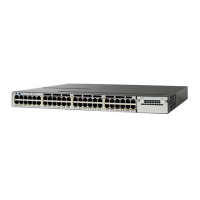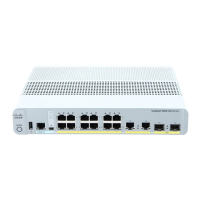monitor session destination
To start a new Switched Port Analyzer (SPAN) session or Remote SPAN (RSPAN) destination session, to
enable ingress traffic on the destination port for a network security device (such as a Cisco IDS Sensor
Appliance), and to add or delete interfaces or VLANs to or from an existing SPAN or RSPAN session, use
the monitor session destination global configuration command. To remove the SPAN or RSPAN session or
to remove destination interfaces from the SPAN or RSPAN session, use the no form of this command.
monitor session session-number destination {interface interface-id [, | -] [encapsulation {replicate | dot1q}
] {ingress [dot1q | untagged] } | {remote} vlan vlan-id
no monitor session session-number destination {interface interface-id [, | -] [encapsulation {replicate |
dot1q} ] {ingress [dot1q | untagged] } | {remote} vlan vlan-id
Syntax Description
session-number
Specifies the destination or source interface for a SPAN or
RSPAN session. Valid interfaces are physical ports (including
type, stack member, module, and port number). For source
interface, port channel is also a valid interface type, and the
valid range is 1 to 128.
interface interface-id
(Optional) Specifies a series of interfaces or VLANs, or
separates a range of interfaces or VLANs from a previous
range. Enter a space before and after the comma.
,
(Optional) Specifies a range of interfaces or VLANs. Enter a
space before and after the hyphen.
-
(Optional) Specifies that the destination interface replicates
the source interface encapsulation method. If not selected, the
default is to send packets in native form (untagged).
These keywords are valid only for local SPAN. For RSPAN,
the RSPAN VLAN ID overwrites the original VLAN ID;
therefore, packets are always sent untagged. The
encapsulation options are ignored with the no form of the
command.
encapsulation replicate
(Optional) Specifies that the destination interface accepts the
source interface incoming packets with IEEE 802.1Q
encapsulation.
These keywords are valid only for local SPAN. For RSPAN,
the RSPAN VLAN ID overwrites the original VLAN ID;
therefore, packets are always sent untagged. The
encapsulation options are ignored with the no form of the
command.
encapsulation dot1q
Enables ingress traffic forwarding.ingress
Command Reference, Cisco IOS XE Everest 16.5.1a (Catalyst 3650 Switches)
505
monitor session destination
